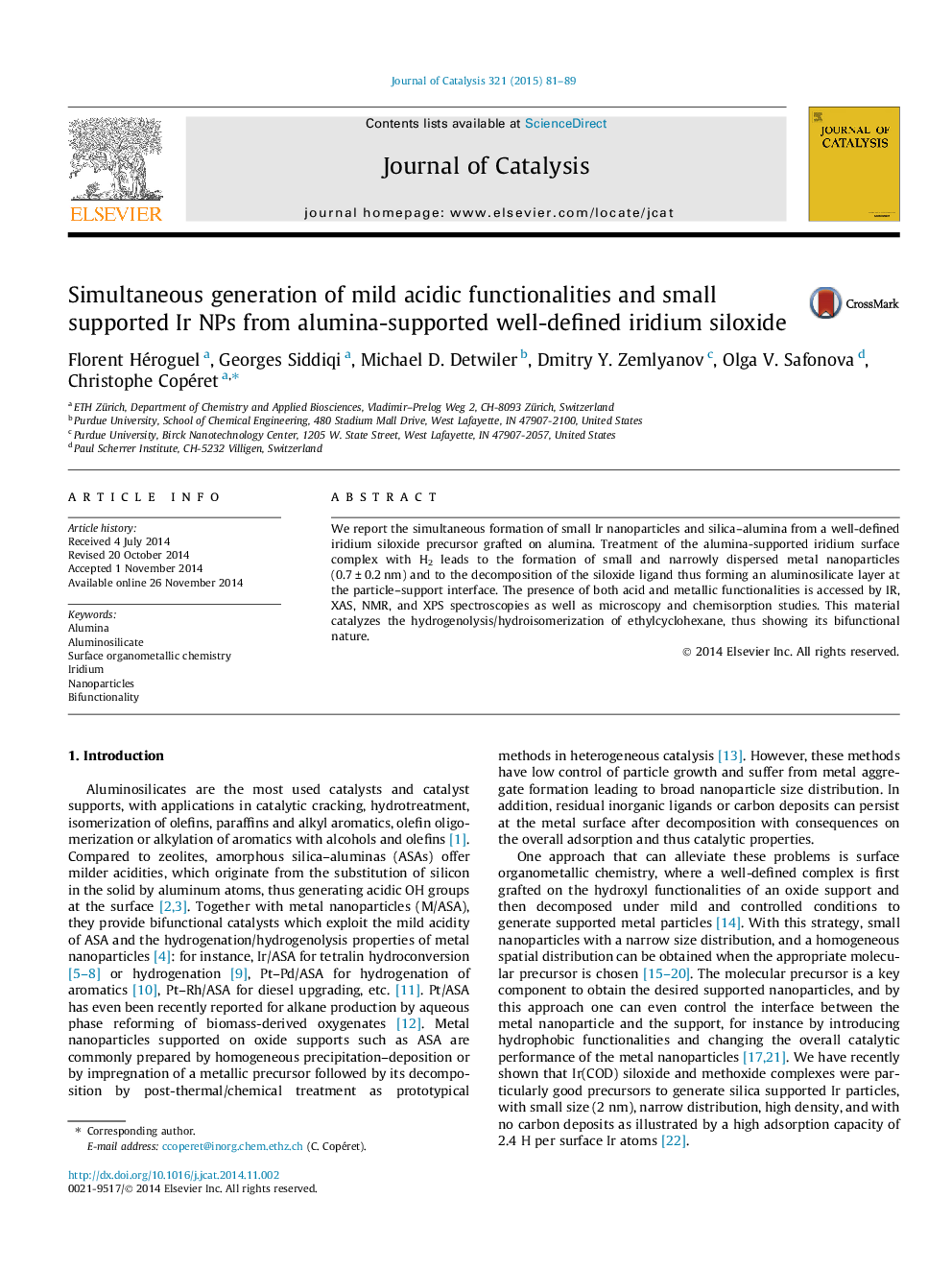| Article ID | Journal | Published Year | Pages | File Type |
|---|---|---|---|---|
| 60928 | Journal of Catalysis | 2015 | 9 Pages |
•Formation of well-defined alumina-supported dinuclear iridium siloxide, characterized at a molecular level by IR, NMR, and XAS.•Generation of small and narrowly dispersed Ir(0) particles (0.7 ± 0.2 nm) supported on in situ generated aluminosilicate.•Size and nature of supported Ir nanoparticles established by XPS, XAS, and chemisorption.•Ethylcyclohexane hydroisomerization activity probes the presence of both metallic and mild acidic sites.•Bifunctionality originates from a single molecular precursor.
We report the simultaneous formation of small Ir nanoparticles and silica–alumina from a well-defined iridium siloxide precursor grafted on alumina. Treatment of the alumina-supported iridium surface complex with H2 leads to the formation of small and narrowly dispersed metal nanoparticles (0.7 ± 0.2 nm) and to the decomposition of the siloxide ligand thus forming an aluminosilicate layer at the particle–support interface. The presence of both acid and metallic functionalities is accessed by IR, XAS, NMR, and XPS spectroscopies as well as microscopy and chemisorption studies. This material catalyzes the hydrogenolysis/hydroisomerization of ethylcyclohexane, thus showing its bifunctional nature.
Graphical abstractFigure optionsDownload full-size imageDownload high-quality image (64 K)Download as PowerPoint slide
